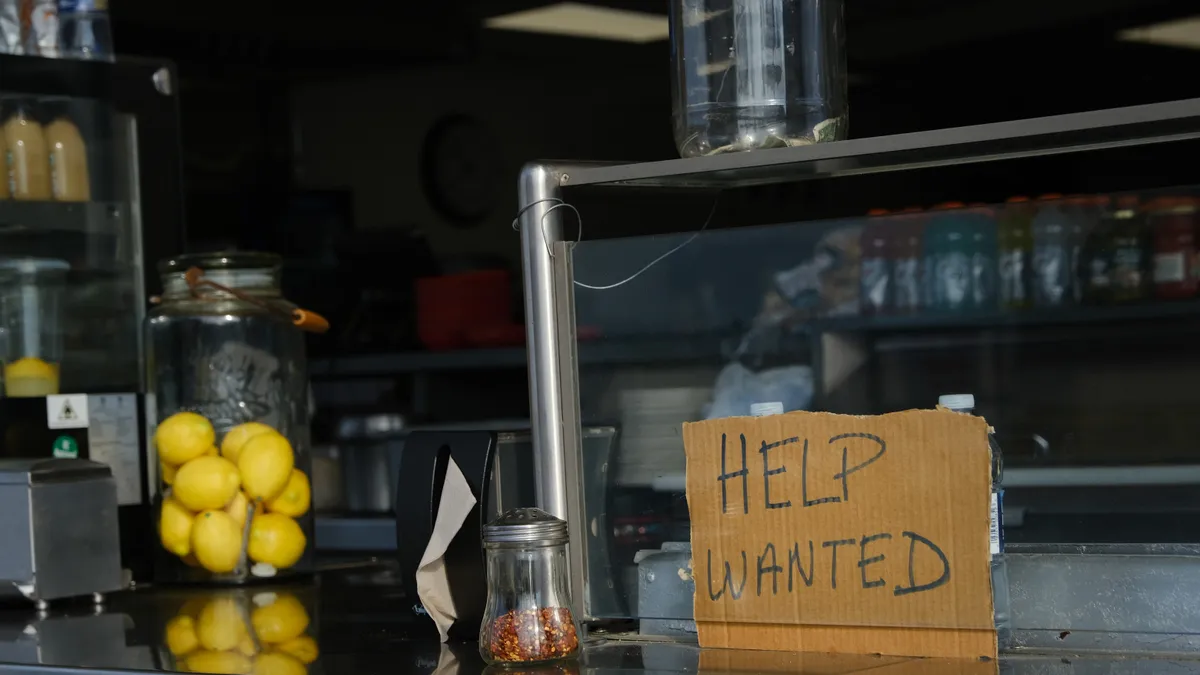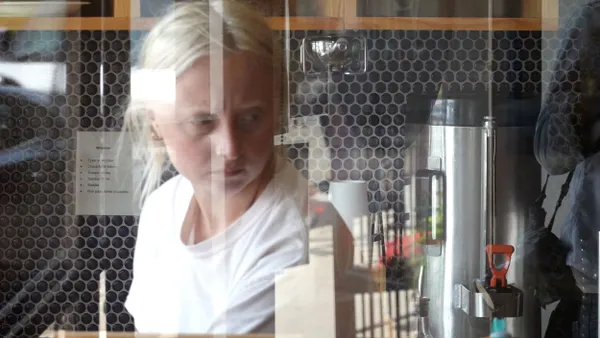Dive Brief:
- Thirty percent of restaurant owners said business has returned to pre-pandemic levels, according to survey by Popmenu, while 25% said it has surpassed them.
- Popmenu surveyed 374 restaurant owners and operators and 1,002 customers regarding conditions in the foodservice industry in May and June. Respondents reported staffing challenges were hurting business.
- A majority (51%) of restaurateurs surveyed said their businesses lacked the staffing to meet on-premise dining levels this summer.
Dive Insight:
Popmenu’s survey of consumers indicates staffing challenges and rising foot traffic are impacting customer experiences, with 59% of respondents increasing their digital ordering due to long waits and lack of tables. Operators are missing out on on-premise sales as a result of low staffing levels, Brendan Sweeney, Popmenu’s CEO, said in the press release.
“This can be incredibly frustrating for restaurateurs — and their customers — which is why more are relying on guest-facing technology to make operations more efficient and capture revenue opportunities that would have otherwise been missed,” Sweeney said.
Seventy-six percent of surveyed operators have increased their reliance on technology in the face of continued labor issues, with tech like online ordering and automated phone systems filling gaps left in operations.
During an interview at the National Restaurant Association Show in May, Sweeney told Restaurant Dive that many operators who have made it through the last two years have become more adaptable.
“I think people have learned [they] actually can make it through any of these [challenges],” Sweeney said.
Even though a majority of operators report business reaching or exceeding pre-pandemic levels, employment in the restaurant industry lags about 750,000 jobs behind its February 2020 peak, equivalent to about 6% of the pre-pandemic workforce, according the Bureau of Labor Statistics. And 83% of restaurants are having trouble meeting staffing needs, according to a May survey conducted by Alignable. Popmenu’s survey indicated about 33% of restaurants are not operating at full capacity as a direct result of staffing issues.
The impact of labor shows up in other surveys as well. Yelp has found complaints over short-staffing have increased 229% in Q1 2022 compared to Q1 2021. Many, however, lack sufficient money to hire additional workers, especially restaurants that applied for but did not receive Restaurant Revitalization Fund grants. Eighty-six percent of restaurants surveyed by the Independent Restaurant Coalition said RRF grants would help them add employees, while 83% said it would help them raise wages. The Senate declined to pass a $40 billion refill of the RRF earlier this year.
Many restaurants have turned to tech to overcome labor shortfalls, with a number of QSR chains experimenting with back-of-house automation, like White Castle’s partnership with Miso Robotics. Chili’s has added Bear Robotic’s Rita the Robot to as many as 61 of its restaurants in a bid to speed up table service.














